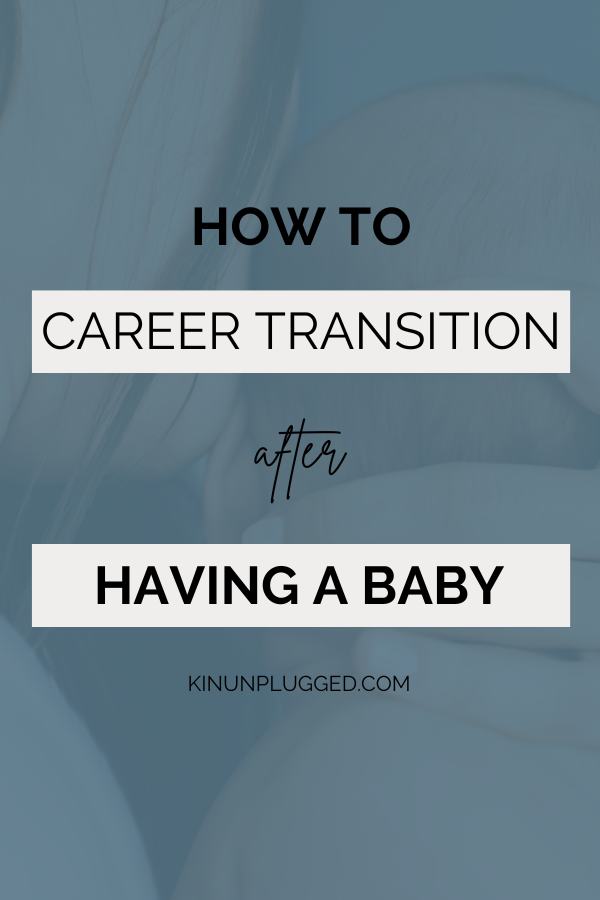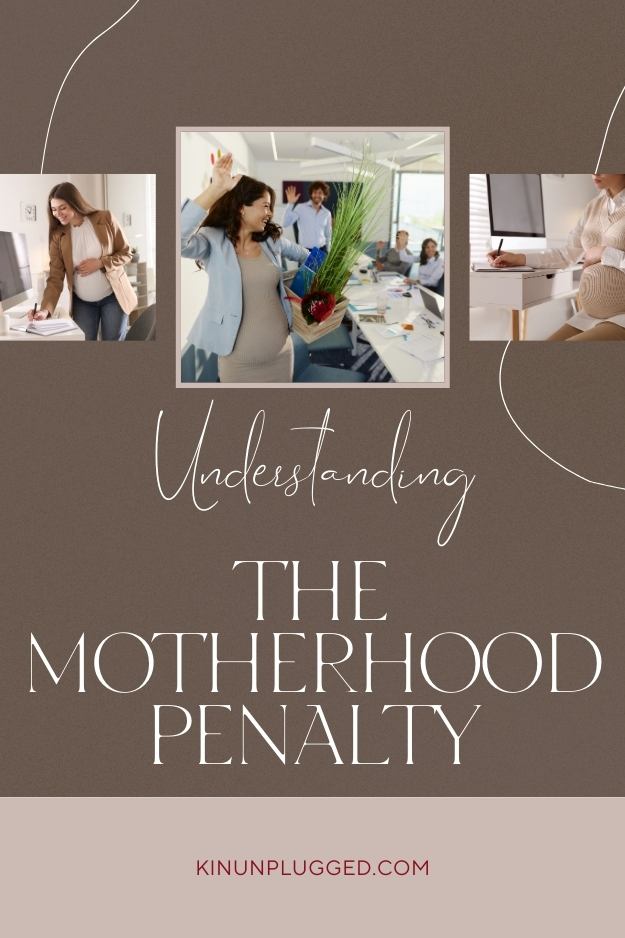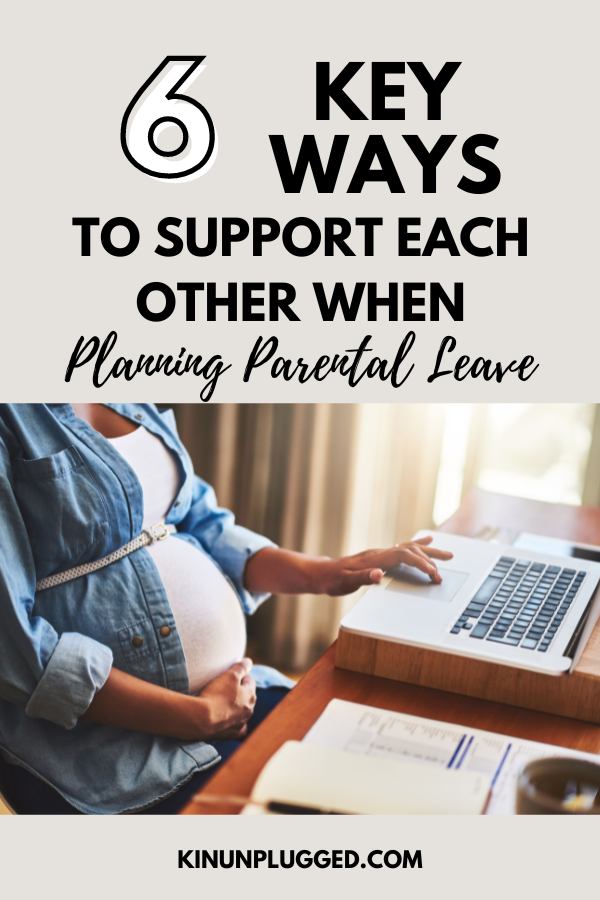It’s so important to start planning for your career and parental leave when you’re having a baby together. Families are juggling work and family life and also dealing with the challenges that come from being new parents and for some, it is a very difficult balancing act.
In this article, we’ll get into the details of some of the biggest considerations to make career-wise when you’re about to start a family together.
Get: THE ULTIMATE WORKBOOK FOR COUPLES STARTING A FAMILY TOGETHER

Assessing current career situations
Evaluate each partner’s career flexibility
It’s important to evaluate each partner’s career flexibility when considering starting a family. Begin by discussing how flexible each job is in terms of working hours, remote work options and job responsibilities. This can help identify which partner might have more capacity to take on family-related duties or adapt their work schedule.
A key factor in this discussion is the impact of existing job policies, such as parental leave options and job security during time off. Understanding how your current employer handles parental leave can shape decisions about how time will be divided when the baby arrives. For example, parental leave in the UK allows both partners to share up to 50 weeks of leave but not all companies offer the same support in terms of pay or flexibility during this period.
If the current policies at your job don’t seem favorable, it may be worth exploring whether one partner should consider switching jobs to companies with better parental leave policies before starting a family. Some companies, especially those with strong family-friendly cultures, offer extended parental leave benefits, on-site childcare, or enhanced job security during time off – all of which could reduce stress and ensure a smoother transition into parenthood.
Plan for role shifts or temporary changes
Assess whether one partner should temporarily scale back on work hours, switch to part-time or take extended leave. This decision often hinges on factors such as financial stability, career flexibility and the availability of parental leave policies. Open communication is essential as both partners weigh the pros and cons of adjusting their work responsibilities.
One approach could be for the partner with more job flexibility or lower earnings potential to reduce their hours or take a leave of absence. On the other hand, if both partners value career progression, they might opt to share responsibilities evenly, using parental leave as a tool to balance time off.
When discussing these decisions, it’s important to consider the different ways parental leave impacts men and women in the workplace. Parental leave in the UK allows both parents to share leave but traditional gender dynamics still play a role. Women are often expected to take longer leaves, which can affect career advancement and job security.
Men, on the other hand, may face stigma for taking extended leave as it’s still less common in many industries. Addressing these dynamics upfront can help couples make decisions that feel equitable and supportive of both partners’ careers.
Understanding parental leave laws and options

Overview of parental leave policies in the U.S.
Parental leave policies in the U.S. are notably limited compared to many other developed countries. At the federal level, the Family and Medical Leave Act (FMLA) provides up to 12 weeks of unpaid leave for new parents, but it only applies to employees of companies with 50 or more workers who have been employed for at least 12 months. FMLA guarantees job protection but many families cannot afford to take unpaid time off, making this policy insufficient for many parents.
However, some states have stepped in to offer stronger, more comprehensive leave options. For example:
- California offers Paid Family Leave (PFL), which provides up to 8 weeks of partially paid leave for new parents, funded through state disability insurance.
- New York has a generous Paid Family Leave program that offers up to 12 weeks of leave at a percentage of the employee’s salary.
- Washington also provides up to 12 weeks of paid family leave, with the possibility of extending it to 16 weeks for complicated pregnancies or certain family needs.
On the other hand, many states have no mandated parental leave policies at all, leaving workers reliant solely on the FMLA or their employer’s discretion. States like Alabama, Georgia and Mississippi have no state-level paid leave mandates, creating a significant disparity in access to leave across the country.
Unlike in the U.S., the United Kingdom maternity leave policy is much more robust, offering up to 52 weeks of leave, 39 of which can be paid. This highlights the stark difference in support for working parents between the two countries, especially for families in states with no paid leave provisions in the U.S.
Benefits of taking leave for both parents
Taking parental leave offers significant benefits for both parents, positively impacting family well-being and individual health. Research shows that when both parents take leave, it leads to improved outcomes for mothers, fathers and children alike.
For mothers, taking leave – especially in the postpartum period – promotes faster recovery and improved mental health. Adequate rest and time to bond with the newborn can help prevent complications like exhaustion and reduce the risk of postpartum depression. Studies suggest that when mothers have the support of their partner during this time, the likelihood of postpartum depression decreases even further, as shared responsibilities ease the transition into parenthood.
Fathers also benefit from taking parental leave. It strengthens father-child bonding, as time spent during the early months helps fathers build a deeper connection with their baby. This bonding has long-term positive effects, including more involved fatherhood and greater emotional closeness as the child grows. Fathers who take leave are also more likely to continue sharing caregiving duties over the years, creating a more balanced dynamic in the family.
For both parents, taking leave has been linked to greater family cohesion and a smoother adjustment to life with a newborn. The shared experience can reduce stress and improve the couple’s relationship by allowing both partners to navigate this life change together.
While the U.S. often falls short in offering adequate leave, countries with generous policies, like the United Kingdom maternity leave, show how supportive leave policies lead to healthier outcomes for families. In the UK, the ability for both parents to take leave enables a more equal division of caregiving from the start, providing a model of shared parental involvement that benefits both parents and children.
RELATED: 11 Things to discuss before having a baby
Financial planning for parental leave

Budget for reduced income during leave
Budgeting for reduced income during parental leave is essential for financial stability as you transition into parenthood. Since many leave policies provide only partial or no pay, planning ahead can help you manage the financial impact. One of the first steps is creating a career and parental leave plans strategy that includes saving and adjusting your budget in the months leading up to your leave.
Saving strategies
- Start early. Begin setting aside funds as soon as you start considering parental leave. Aim to save 3-6 months’ worth of living expenses, especially if your leave will be unpaid or partially paid.
- Build an emergency fund. In addition to leave-specific savings, maintain an emergency fund to cover unexpected costs, like medical bills or home repairs, that may arise during your leave.
- Cut non-essential spending. Review your budget and identify areas where you can reduce discretionary spending, such as dining out, subscriptions, or entertainment.
Budget adjustments
- Create a reduced-income budget. Estimate your household income during leave and adjust your monthly expenses to fit within that limit. Include fixed costs like rent/mortgage, utilities, groceries, and transportation.
- Look for financial assistance. Research any government programs, tax credits or employer benefits that may help ease financial pressures during leave.
Planning for childcare
As you prepare for parental leave, also consider the long-term costs of childcare. According to reports, the average cost of raising a child from birth to age 18 in the U.S. is around $310,000. Planning for early childcare, such as daycare or part-time help can be a major budget factor.
- Research childcare costs. Begin researching the average cost of childcare in your area to factor this into your future budget.
- Consider alternative options. Some families opt for part-time help, family support or even staggered work schedules between partners to reduce childcare costs in the first year.
If you carefully save and adjust your finances, you can create a financial cushion that helps you manage the transition into parenthood without unnecessary stress.
Explore employer benefits and alternatives
Negotiating flexible work arrangements
One of the most effective ways to manage both career and family responsibilities is by negotiating flexible work options with your employer. Here are a few approaches:
- Remote work. If your job allows, consider requesting to work from home either full-time or part-time. This can help you maintain an income while being more present for your newborn.
- Reduced hours or part-time. Another option is to propose temporarily reducing your work hours. While this will impact your income, it could be a more manageable transition back to work.
- Staggered return. Some employers may offer the possibility of gradually increasing your hours over time, starting with part-time and moving to full-time.
- Job sharing. In some cases, you could suggest job-sharing arrangements, where two employees split the responsibilities of one full-time role, allowing you to balance work and family.
Leveraging other types of paid time off
If your employer offers limited paid parental leave, you can maximize income by using other forms of paid time off.
- Sick leave. If you or your partner has accumulated sick leave, it may be possible to use it to extend your paid time off. Some companies allow this for family caregiving purposes.
- Vacation days. Many employees use accrued vacation days before or after their parental leave to ensure a continuous income stream during time off.
- Paid Time Off (PTO). If your company has a PTO policy that combines vacation and sick leave, it can be helpful to save those days in advance to cover part of your parental leave.
Look into employer-sponsored benefits
Some companies offer additional benefits that you can include in your career and parental leave plans, such as:
- Short-term Disability. This may cover a portion of your salary during maternity leave, depending on your company’s policy.
- Parental leave top-ups. In some cases, employers may offer a top-up that supplements state or federal leave payments, helping you maintain a closer-to-normal income level.
Career transition strategies post-baby

As family responsibilities increase, it’s natural to reassess what you want out of both your work and home life and finding a balance is key.
Many new parents find that their priorities shift after the birth of a child. Some may want to pursue a less demanding job or reduce hours to focus more on family, while others may decide to accelerate their career to provide financial stability. For some, the experience of parenthood brings a desire for more fulfilling, flexible work that aligns with new family values.
Whether it’s a new career path, a decision to go part-time or a complete shift in priorities, acknowledging that these changes are natural can help ease the transition.
Strategies for maintaining career momentum
To maintain career momentum while balancing family life, think about the following:
- Part-time work. If full-time work feels overwhelming, part-time work can offer the flexibility to continue professional development while giving you more time with your family. Some companies may offer reduced hours with benefits, allowing you to stay in the workforce.
- Freelancing. Freelancing provides flexibility in terms of workload and schedule, which can be ideal for parents seeking more control over their time. It also allows you to build experience and maintain skills while managing parenting responsibilities.
- Entrepreneurship. Starting your own business or side hustle can provide both financial security and flexibility. Many parents opt for entrepreneurship as a way to pursue personal passions while accommodating their family’s needs.
- Utilizing resources. Make use of tools like the shared parental leave calculator to assess how shared leave could impact your career plans. If you and your partner decide to share leave, it may allow you to return to work earlier while your partner takes over, helping to keep your career on track.
How to maintain professional identity during leave
Maintaining your professional identity during extended parental leave is essential for staying connected to your industry and easing your eventual transition back into work.
Tips for staying connected during leave
- Networking. Even while on leave, stay in touch with colleagues, mentors, and industry contacts. A simple check-in email or a coffee meet-up can help you maintain those professional relationships. Also, staying active in professional groups or online communities is an easy way to remain visible in your field.
- Attend virtual events. Many industries offer webinars, virtual conferences, or online workshops that you can attend without leaving home. These events keep you informed about the latest trends and developments in your field and provide opportunities to network with professionals. Attending a few key events during your leave helps you stay engaged without committing to full-time work.
- Update LinkedIn. Keeping your LinkedIn profile current is an excellent way to maintain your professional identity. You can add any courses, certifications, or volunteering you’ve completed during leave. Consider sharing industry-related content or articles, which can demonstrate that you’re staying informed even while away from your job.
- Freelancing or consulting. If possible, taking on small freelance or consulting projects during your leave can help you keep your skills sharp while also contributing to your professional portfolio. This is also an excellent way to maintain connections and potentially open doors for future opportunities.
- Make use of tools like the Shared Parental Leave calculator. If you and your partner are considering sharing leave, using a tool like the shared parental leave calculator can help you determine how to divide the time in a way that benefits both your career and your family. Sharing leave may allow one partner to stay more professionally active while the other takes on caregiving duties, balancing career momentum for both.
Being proactive like this will help you maintain your professional identity and also help you to make a smoother transition back to work when you’re ready.
Addressing gender dynamics and leave inequality
Breaking down the “Motherhood penalty” and “Fatherhood premium”
The “Motherhood penalty” and “Fatherhood premium” are terms used to describe the unequal career impacts that parents experience after having children. Research shows that while mothers often face setbacks in their careers, such as slower promotions, lower pay and reduced job opportunities, fathers can experience the opposite – a boost in their career, known as the “Fatherhood premium.”
The Motherhood Penalty

Women who take parental leave or reduce their work hours to accommodate family life often face career penalties. These include:
- Slower career progression. Mothers may find themselves passed over for promotions or high-profile projects due to assumptions about their availability or commitment.
- Wage gap. Women frequently experience a widening wage gap after becoming mothers, known as the “Motherhood penalty,” where they earn less than their childless peers or even fathers in similar roles.
- Stereotypes. Mothers are often stereotyped as less dedicated to their careers, leading to fewer opportunities and biases that can hurt their long-term career trajectory.
The Fatherhood Premium

In contrast, men who become fathers often receive a “Fatherhood premium,” meaning they are viewed more favorably in the workplace. This can lead to:
- Increased responsibility. Fathers are sometimes seen as more stable and reliable employees, leading to promotions or opportunities for leadership roles.
- Higher wages. Studies have shown that men’s wages tend to increase after they become fathers, partially due to societal perceptions that fathers are the primary breadwinners.
Advocating for fair parental leave policies
To fight these disparities, couples can work together to advocate for more equitable parental leave policies in their workplaces. Here are some strategies:
- Equal leave policies for both parents. Encouraging employers to offer equal and adequate leave for both mothers and fathers can help reduce the disparity between the “Motherhood penalty” and the “Fatherhood premium.” This approach allows both parents to share caregiving responsibilities more equally.
- Flexible work options. Advocating for flexible work arrangements, such as remote work or flexible hours, can benefit both mothers and fathers. By normalizing these options for all parents, workplaces can reduce the perception that mothers are the only ones scaling back.
- Education and awareness. Raising awareness about the impacts of biased leave policies is crucial. Couples can engage with HR departments or leadership teams to ensure that policies are fair and inclusive for all parents, helping to challenge traditional stereotypes.
In the context of parental leave in the UK, where shared parental leave is available, couples can use tools like shared leave calculators to better distribute leave between partners, encouraging fathers to take more time off.
Building a supportive plan as a couple

Creating a joint parental leave strategy
As couples prepare for the arrival of a baby, it’s vital to establish a joint parental leave strategy that reflects both partners’ needs and aspirations. Honest discussions about career priorities, long-term goals, and caregiving responsibilities will form the backbone of this plan.
- Communicate career aspirations. Each partner should take the time to articulate their career aspirations, considering factors like current projects, potential promotions, and personal ambitions. This dialogue helps to identify who might be better positioned to take extended leave or adjust work hours.
- Explore leave policies. Understanding available parental leave options is crucial. In the UK, for example, the parental leave in the UK framework allows for flexibility, including shared parental leave, which enables parents to divide their leave according to their preferences. Researching these policies will help couples tailor their plan effectively.
- Develop a dynamic approach. Acknowledge that life with a newborn can be unpredictable. Creating a plan that accommodates change will enable both partners to adapt as needed, ensuring that neither feels overwhelmed.
Managing expectations and redefining success
The transition to parenthood often prompts a reevaluation of career success for both partners. Supporting each other’s professional and parenting goals requires a commitment to understanding and adapting to new realities.
- Identify new definitions of success. Success may take on a different shape after having a child. For one partner, this could mean taking on more parenting duties while the other pursues career advancement. Together, discuss how each of you envisions success and the steps necessary to achieve it.
- Establish achievable goals. Set goals that align with your new lifestyle, recognizing that certain ambitions may need to be adjusted temporarily. This proactive approach can help alleviate the pressure of trying to maintain pre-baby career trajectories.
- Encourage mutual support. Make a concerted effort to support each other’s individual goals, whether that means offering encouragement, sharing responsibilities or being flexible with each other’s schedules. Regularly revisiting these discussions will reinforce your commitment to each other’s success.
In conclusion, as a couple, you really need to be proactive when it comes to planning for your parental leave. Be flexible but make a plan that prioritizes your family’s well-being and career growth at the same time.
I hope you’ve found these suggestions helpful or at the very least, thought provoking and a good starting point for you in your decision making about your parental leave plans.





